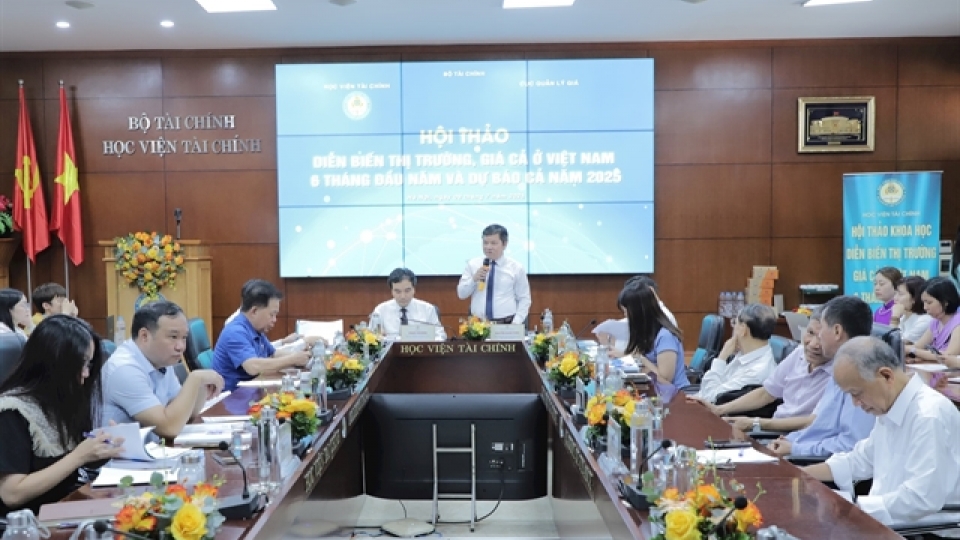Inflation stays low in Vietnam, but external risks loom, warn experts
VOV.VN - Vietnam recorded a modest 3.27% increase in its consumer price index (CPI) in the first half of 2025, well below the National Assembly’s 4-5% inflation target. However, economists warn that rising global uncertainties may challenge the country’s ability to maintain this momentum through the rest of the year.

According to Dr. Le Quoc Phuong, former deputy director of the Industry and Trade Information Centre under the Ministry of Industry and Trade, the current CPI rate is consistent with Vietnam’s 10-year trend of keeping inflation under 4%, creating a solid foundation for inflation control in the second half of the year.
He attributes the success to a combination of stable macroeconomic indicators, including the budget deficit, public debt, and exchange rate, and an abundant domestic supply of goods, particularly food, which helps prevent sudden price spikes.
Globally, weak economic growth and relatively stable oil prices, despite ongoing geopolitical tensions, also helped lilmit external inflationary pressure.
Meanwhile, Dr. Nguyen Duc Do, vice president of the Institute of Economics and Finance, forecasts the average CPI for 2025 to hover around 3.4%, or possibly even drop to 3% if global commodity prices continue their downward trend amid prolonged trade tensions. Assuming monthly CPI increases by an average of 0.27%, the typical pace from 2015 to 2024, inflationary pressure would stay well within manageable limits.
However, he identifies several potential risks, including the US$/VND exchange rate that has risen sharply since early 2025. Money supply and credit growth have outpaced nominal GDP growth; while upcoming adjustments to public service fees under cost-recovery policies could fuel inflation.
Dr. Phuong also cautions that volatile tax policies in major economies could destabilize global trade and influence domestic price levels. He also flags Vietnam’s ambitious growth target of over 8% for 2025 as a factor requiring expansionary fiscal and monetary policies, which, if not carefully managed, may heighten inflation risks.
Nonetheless, he is confident that controlled policy implementation will help Vietnam strike a balance between growth and price stability.
Likewise, Assoc. Prof. Dr. Nguyen Dao Tung, director of the Academy of Finance, points to a bleak global economic outlook shaped by rising trade tensions and tariff policies, especially from the United States. This slowdown could hurt Vietnam’s exports and manufacturing. Domestically, fast-growing exchange rates and money supply may raise production costs and further intensify inflationary pressure in the months ahead.
To keep inflation at the set target range, experts propose a range of coordinated solutions, including introducing a flexible monetary policy, with prudent interest rate and exchange rate management, and stabilising fuel prices to avoid knock-on effects across the economy. In addition, the government should accelerate public investment disbursement to support growth, enhance transparent and consistent policy communication to anchor market expectations, and incorporate social welfare policies to ease household spending pressure.
One notable development is Vietnam’s plan to waive tuition fees nationwide for students from preschool to high school starting in the 2025–2026 academic year, a policy that could help lower household expenses and curb CPI growth in the long term.
With stable macroeconomic fundamentals, adequate supply, and proactive policy management, Vietnam is well-positioned to maintain inflation under control in 2025. This provides the confidence needed to boost investment, production, and consumption, which are vital to sustaining economic recovery amid a still-uncertain global environment.




